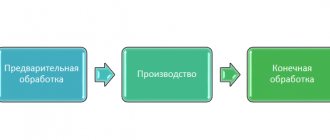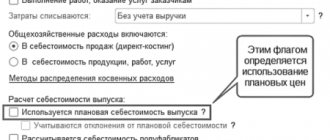Legal understanding of the object
Regardless of what stage of construction a building is at, the construction of which is not completed, it refers to real estate, since the Civil Code of Russia (Article 130) directly states: everything that has an integral physical connection with the land refers to real estate.
However, in domestic legislation there is neither the very concept of such an object nor its precise definition. In practice, an understanding of this term has developed that simultaneously corresponds to all of the listed characteristics:
- this is an immovable object, the construction of which is at any stage: from the construction of the foundation and first floor to work related to the installation of windows, doors, communication structures in a completed house;
- the building is a so-called capital (long-term) construction object: i.e. kiosks, stalls and other temporary structures do not meet the definition;
- The construction process of such a building is suspended for various reasons until a specific date (or without specifying a date in case of objective impossibility) due to subjective factors: lack of funds, force majeure, changes in market conditions.
https://www.youtube.com/watch?v=QPUVIBIE0gQ
However, the Town Planning Code and other regulations do not directly indicate what can be considered a capital construction project. Therefore, at the theoretical level, difficulties in definition still exist.
The regulatory framework, which contains some grounds for interpreting the concept of an unfinished construction project, is as follows:
- Civil Code.
- Town Planning Code.
- Instructions on the procedure for preparing reports on capital construction.
Based on these documents, we can give the following definition: this is an immovable construction project that is not completed from a technical point of view: i.e. the construction of the building and/or installation of life support systems has not been completed in whole or in part, which excludes the possibility of living in it, organizing non-residential premises and any other type of operation.
Accounting and assessment of work in progress in construction
Commissioned construction projects belong to the category of fixed assets (this is the company's real estate). At the construction stage, all costs associated with construction are investments in non-current assets. Such costs include:
- construction costs (purchase of materials, payment for contractor services);
- installation costs;
- the cost of purchasing tools and equipment to complete construction work;
- payment of salaries to specialists involved in construction, deductions for insurance premiums;
- payment of rent for land plots on which work is carried out;
- fuel costs for special equipment used during construction.
How to take into account the actual costs of construction in progress? In accounting, account 08 “Investments in non-current assets” serves as an intermediate link; it accumulates the costs of constructing and preparing for commissioning of a real estate property. This account is active, all expenses are carried out by debit turnover.
If there is unfinished construction, in accounting, account 08 is used indicating the subaccount - 08.3. If there are several objects under construction, separate analytics are carried out for each of them. This is necessary to ensure the ability to isolate from the total amount expenses that should be attributed to the original cost of a particular asset.
In the accounting of public sector employees, construction in progress is reflected in account 10611. In the Instructions from the Order of the Ministry of Finance dated December 1, 2010 No. 157n, account 10600 is designated as an account for accounting for investments in non-financial assets, it is generalizing. With the help of analytical accounts, the type of assets on the formation of which money is spent is clarified (fixed assets, intangible assets, etc.).
Work in progress is the construction contractor's costs for unfinished work performed in accordance with the construction contract. Work in progress in a construction organization includes unfinished work on objects of cost accounting from the beginning of the contract. The general contractor's work in progress consists of the costs of construction and installation work performed in-house, as well as the cost of work performed by subcontractors accepted by the general contractor.
One of the most difficult issues that arise during process costing is the assessment of work in progress. Work in progress has a lower cost than the cost of finished goods, and the presence of work in progress inventories at the beginning and end of the reporting period does not allow us to determine the cost of finished goods by dividing total costs by total production volume.
Work in progress (WIP), according to the Regulations on accounting and financial reporting in the Russian Federation, approved by Order of the Ministry of Finance of Russia dated July 29, 1998 No. 34n, includes: products (works) that have not passed all stages (phases, redistributions) provided for by the technological process ; incomplete products that have not passed testing and technical acceptance.
Press service of the Interregional Inspectorate of the Federal Tax Service of Russia No. 3 for the Belgorod Region
As in accounting, in tax accounting expenses are divided into direct and indirect (Clause 1, Article 318 of the Tax Code of the Russian Federation). However, these are completely different concepts.
If in accounting, direct costs are understood as those expenses that are directly (in particular, without distribution) included in the cost of production, then in tax accounting, direct expenses are understood as all expenses that are included in the tax cost of products.
The taxpayer independently determines in the accounting policy for tax purposes a list of direct expenses associated with the production of goods (performance of work, provision of services) (clause
Production in accordance with clause 63 of the Accounting and Reporting Regulations includes: products (works) that have not passed all stages of the technological process and incomplete products that have not passed testing and technical acceptance, as well as unfinished work not accepted by the customer.
Unfinished products also include fully completed products that have not passed the tests required by the technology.
The volume of work in progress is determined by inventory or documentary method.
Accounting for work in progress
Work in progress (WIP) represents parts and assembly units that have not been fully manufactured, as well as products that have not been accepted by technical control. The composition of unfinished goods includes: parts and semi-finished products of our own production, subject to further processing or assembly, incomplete products that have not passed testing and technical acceptance, correctable defects.
Uncorrectable defects, materials in workshops that have not been processed, parts, assembly units and products on canceled orders, etc. do not apply to production.
Correct assessment of work in progress is important for accurately calculating the cost of manufactured products, as well as for ensuring the safety of unfinished parts and products.
In accounting, the actual value of costs in work in progress is the value of the debit balance in accounts 20 “Main production” and 23 “Auxiliary production”.
— know its quantitative expression (number of parts, assembly units, products by stages of the technological process);
- make its valuation.
To more accurately determine the amount of work in progress, an inventory is carried out, usually at the end of the year.
- in a single unit - according to actual costs incurred;
— in mass and serial production: according to standard (planned) production costs; by direct cost items; at the cost of raw materials, materials and semi-finished products.
A publishing and printing organization uses a stamp to cut blanks of a certain shape from paper, which are then folded into brochures.
Chapter 1. Economic essence and methodology of accounting for work in progress
Unfinished objects in the amount of costs incurred for their construction are taken into account on account 08 under subaccount 3. The account is active. Expense transactions are reflected in debit transactions. All amounts accumulated during the construction period are written off against the loan upon commissioning of the asset. Typical wiring:
- Contract work accepted by the customer – D08.3 – K60.
- D19 – K60 - reflects the amount of accrued VAT.
In the balance sheet form approved by Order of the Ministry of Finance dated July 2, 2010 No. 66n, the cost of unfinished construction is shown as part of fixed assets. Line 1130 is intended for this (section 1 in the reporting form asset). Additionally, a breakdown of the cost of unfinished objects is compiled.
If you decide to sell the unfinished building to third parties, VAT is charged on its value. The tax base is the size of the price reflected in the contractual documentation. The transaction is formalized by a purchase and sale agreement. The proceeds received are accounted for in the period in which the asset was transferred to the buyer on the basis of the act. Profit is shown by the date of registration of ownership rights by the party acquiring the object.
The sale will be accompanied by the preparation of the following corresponding records:
- D62 – K91.1 – posting confirming the recognition of income from the transaction for the sale of unfinished construction;
- D91.2 – K68 – reflects VAT accrued on the contract price;
- D91.2 – K08.3 – the cost of an unfinished asset that is being sold is taken into account.
FOR YOUR INFORMATION! The disadvantage of the current taxation scheme is evident for simplifiers. They will have to include the entire proceeds in the tax base, which will significantly increase the value of the tax liability.
According to Letter of the Ministry of Finance dated March 24, 2021 No. 03-05-06-01/17081, unfinished objects that have been registered fall into the category of taxable property. The value of such assets is included in the overall property tax base. For individuals, the norm was introduced in 2015 (Article 401 of the Tax Code of the Russian Federation).
If the payer of property tax is an individual, then the cadastral or inventory value is taken as the basis for taxation (Article 402 of the Tax Code of the Russian Federation). In Art. 403 of the Tax Code of the Russian Federation provides for a number of tax benefits for pensioners, disabled people, persons with state awards and participants in military operations (a complete list of persons entitled to take advantage of the benefit is given in Article 407, paragraph 1 of the Tax Code of the Russian Federation). It is not possible to reduce tax by applying benefits in relation to trade, administrative facilities and expensive assets (with a price of 300 million rubles or more).
For legal entities, tax obligations on buildings under construction arise after the facility is ready. Exemption from property tax will be relevant until the company begins to use the asset for its intended purpose and stops investing in its construction or improvement.
If construction is carried out by the customer using borrowed resources, then the cost of the constructed objects in tax and accounting will differ. The tax value will be used when calculating depreciation deductions and income tax; the accounting value is needed to derive property tax liabilities (if the cadastral valuation is taken as the basis).
Who should evaluate the WIP?
The cost of work in progress is calculated only by organizations engaged in the production of products or performance of work. Organizations providing services have the right to include all expenses of the current month as a reduction in sales revenue. However, such a condition must be specified in the accounting policy.
In addition, the value of work in progress in tax accounting should only be determined by organizations that determine income and expenses on an accrual basis. Organizations that use the cash method of calculating income tax do not calculate the value of work in progress.
This conclusion can be drawn from the provisions of paragraphs 1 and 2 of Article 318 of the Tax Code of the Russian Federation.
Registration of an unfinished construction project
In the recent past, unfinished buildings could not be classified as real estate. Russian laws did not allow this. It was believed that the object had not acquired a finished appearance, which means that it was nothing less than just the sum of building materials and human labor spent on the work.
The situation changed with the introduction of amendments to the Civil Code. More specifically, new amendments have appeared to Article 130, which states that any building that, as a result of certain circumstances, remains unfinished due to the suspension of construction is real estate, which means you can register it as your own property.
The owner of the building, who has become the owner by registering it with the relevant government agencies, can perform the following operations:
- sell;
- give;
- pass on as an inheritance;
- exchange;
- pledge against cash.
Perhaps the main condition for successfully registering the right to an unfinished building is the presence of two most important documents - the right to own the land territory on which the building is located, as well as permission to carry out construction and installation work. Plus, before you begin the registration procedure, you must:
- Have a contract in hand with a construction and installation company.
- Visit the Cadastral Chamber and register the unfinished building.
- Complete a technical inventory of the facility in accordance with all rules.
- Take the collected package of documents to the authorities responsible for registering real estate construction projects.
There is one more change regarding the rules for registering unfinished and long-term construction. Previously, the owner could register ownership of such an object only if he intended to carry out some transactions with it (sale, exchange, etc.). Now this condition has been removed from the list of mandatory ones. Thus, ownership can be claimed even if the owner does not intend to complete the transaction.
Registration of an unfinished property, as well as any other type of real estate, is a very troublesome matter. But it is not difficult to carry out this operation from start to finish if you know what actions need to be taken and what documents are needed. It is worth noting that an unfinished property is a very specific category of real estate, so the list of papers for its registration is much wider.
So, here is a list of documents that will be needed for registration and entering information into the Unified State Register of Rights:
- description of the object, its design documentation (if such a document is not available, registration will be rejected);
- building permit (usually issued by municipal authorities);
- documents proving the right to a land plot (it is important to formalize them correctly, otherwise the building may be regarded as an unauthorized construction - Article 222 of the Town Planning Code of the Russian Federation);
- technical passport from BTI;
- an estimate indicating the monetary costs of constructing the facility;
- cadastral plan of the land territory;
- documents confirming that the construction of the building has been suspended (about the absence of a contract, conservation act);
- documents confirming that there are no interests of third parties in the case;
- a receipt issued after payment of the state fee;
- statement of intention to register the object.
Having collected the papers, you should carefully review them and make sure that they are in proper form. The registration authority has the right not to accept documents from the applicant if they are drawn up contrary to the standards: for example, if there are inconsistencies in the land contract or in the project documentation. The verified package of documents can be taken to the local branch of Rosreestr personally by the applicant or his authorized representative, who has presented the appropriate confirmation.
The right to carry out operations on unfinished construction is recognized in cases where the following conditions are met:
- There should not be a valid contract agreement for the project.
- The developer is constructing an object for his own needs, and not for third parties.
- The owner has all the necessary documents permitting its construction.
- The owner of the building has a certificate of ownership.
Ownership rights can also be issued for those objects that are at a certain stage of construction and, accordingly, are unfinished.
From the date of execution of the document, the legal right to own it arises (Article 219 of the Civil Code). All actions with the building, the land plot under it and around it can be performed after registration:
- sale (purchase);
- donation;
- exchange;
- provision of collateral against cash or other facilities;
- inheritance.
The documents that certify the legal rights of the owner to the site and building are as follows:
- certificate of ownership (separately for the object and separately for the land plot);
- certificate of inheritance (including lifelong inheritance);
- certificate of the right to long-term (or indefinite) use of the site for construction purposes;
- long-term lease agreement.
Until recently, it was possible to transfer unfinished real estate into ownership only on the condition that the owner intended to carry out some kind of transaction with it in the near future (sell, donate, exchange, etc.).
However, the current version of the relevant federal law (No. 196-FZ) does not impose such requirements. Now you can freely register a house as property without the obligation to further sell it, exchange it, etc.
Due to the specifics of an object whose construction has not been completed, the list of documents submitted for registration is much wider than in the usual case:
- standard application form;
- original passport or other document that confirms identity;
- receipt of payment of state duty;
- documents with the project and construction estimates (technical passport, cadastral passport, accounting documents and others);
- certificate of ownership of the land plot;
- a permit issued by municipal authorities for construction;
- the entire package of constituent documents that confirm the fact of registration and opening of a legal entity;
- documents proving that the building is not the subject of the contract, i.e. the fact that construction work is not currently being carried out at this address (such documents, for example, include an agreement to terminate the contract);
- documents certifying that the building is not under arrest, is not claimed by third parties, and there is no other type of encumbrance (these facts are reflected in the extract from the Unified State Register of Real Estate).
Registration of property rights occurs during a personal application to the territorial office of Rosreestr directly by the applicant or his representative, who acts by proxy.
After the appropriate permits have been obtained, agreements have been reached with the contractor, and after the act of suspension of construction work has entered into force, the following documents must be drawn up and signed between the customer and the construction company:
- Certificate of acceptance of completed work (partially completed work) by the customer in the form KS No. 2.
Based on this document, a certificate of work completed is drawn up - it indicates the cost of the work, which the customer is obliged to pay to the contractor within the prescribed period.
- A statement that indicates the name of materials, unmounted equipment, machines, structures that will not be used during the conservation period. The form of the document is free and usually represents a list of specified objects with marks of their quantity and cost.
- A document reflecting a complete list of all work and costs associated with ensuring the integrity and safety of the mothballed facility, additional structures and all structural elements that are an integral part of the unfinished building.
After drawing up and signing the specified documents, the customer must, within no more than 2 calendar months from the day on which the act of suspension of construction work was signed, make payments to the contractor:
- for work completed before conservation in full;
- for all losses that arose in connection with the suspension of work;
The customer is also obliged to ensure, at his own expense, the transportation of building materials and/or equipment to other construction sites, if any (or ensure their safety - by agreement with the construction company).
Knowledge of the legal features of registering ownership of an unfinished construction project allows the customer and contractor to avoid unnecessary risks and be able to defend their interests during legal proceedings.
In accordance with the law “On registration of rights to real estate” (clause 2, article 25), registration of ownership of an unfinished construction project begins with registration. To do this, the owner of an unfinished construction project or “unfinished project” must present a permit to carry out construction work.
And also, ownership of the land plot on which these works are being carried out.
If before 2015 a building permit was not required, then starting from March 1 of this year, this document again appeared in the list of required papers. In order to register ownership of an unfinished construction project, you must do the following:
- conduct a technical inventory of the facility;
- obtain permission to carry out construction or construction work;
- enter the object into the cadastral register;
- Take the package of necessary documents to the registration authorities.
How to calculate the cost of WIP
Calculate the cost of work in progress monthly for each type of product (work, service) produced (Clause 1, Article 319 of the Tax Code of the Russian Federation). To do this, you need to distribute direct costs between the balances of work in progress and finished products (work, services) (paragraph 2, paragraph 2, article 318, paragraph 3, paragraph 1, article 319 of the Tax Code of the Russian Federation).
The organization has the right to determine the composition of direct costs taken into account when assessing work in progress. For example, you can value work in progress only by material costs. The procedure for distributing direct costs should be fixed in the accounting policy for tax purposes and apply at least two tax periods (paragraphs 3 and 4 of paragraph 1 of Article 319 of the Tax Code of the Russian Federation, letter of the Ministry of Finance of Russia dated February 7, 2011 No. 03-03-06/ 1/79, dated May 25, 2010 No. 03-03-06/2/101).
To estimate the value of work in progress, use the following algorithm.
First, determine whether there were direct expenses at the beginning of the current month. That is, were there any remaining work in progress at the end of the previous month?
Secondly, determine the presence of work in progress balances at the end of the current month. This must be done on the basis of data from primary documents on the movement and balances of finished products, raw materials, materials by workshops (divisions). For these purposes, you can use the document forms specified in Rosstat Resolution No. 66 of August 9, 1999, Resolutions of the State Statistics Committee of Russia No. 132 of December 25, 1998 and No. 71a of October 30, 1997, or forms developed by the organization independently, taking into account requirements of Article 9 of the Law of December 6, 2011 No. 402-FZ.
Thirdly, for each type of product (work, service), determine the amount of direct expenses incurred in the current month (based on tax accounting data). To the result obtained, add the amount of direct expenses (the cost of work in progress balances) at the beginning of the month.
Various options are possible depending on the production technology.
In the situation under consideration, the organization must independently determine the procedure for distributing direct costs between specific types of products (works, services). The chosen method must be fixed in the accounting policy for tax purposes.
For example, on the same production equipment (fixed asset item), an organization can produce spare parts used for the manufacture of several types of products. In this case, direct costs in the form of depreciation of equipment can be attributed to a specific production process, distributing the amount of depreciation in proportion to the number of spare parts used in the production of each type of product.
Such rules for the distribution of direct expenses are established by paragraph 5 of paragraph 1 of Article 319 of the Tax Code of the Russian Federation.
An example of the distribution of direct costs between types of manufactured products in tax accounting. One type of direct cost cannot be attributed to a specific production process. The organization uses the accrual method
The organization is engaged in the production of medical equipment.
For the production of dental chairs of the Vega and Scarlet models, spare parts are manufactured on the same machine. Therefore, it is impossible to attribute depreciation on this fixed asset in full to the cost of any one product.
The accounting policy of the organization provides for such a procedure for distributing depreciation among fixed assets that produce spare parts for several types of products. The amount of depreciation on such fixed assets is expensed in proportion to the number of spare parts used in the production of a particular type of product.
In June, the organization produced 100 spare parts. Of these, the following were used: – for the production of Scarlet chairs – 60 pieces; – for the production of “Vega” chairs – 40 pieces.
The monthly depreciation amount for the machine is 10,000 rubles. Thus, in the total volume of spare parts produced, the share of spare parts attributable to the production of Scarlet chairs was: 60 pcs. : 100 pieces. = 0.6.
The share of spare parts for the production of Vega seats was: 1 – 0.6 = 0.4.
The organization's accountant calculated the depreciation attributable to the production of each type of product as follows.
The production of Scarlet chairs costs: 10,000 rubles. × 0.6 = 6000 rub.
The production of Vega chairs costs: 10,000 rubles. × 0.4 = 4000 rub.
Fourth, distribute the amount of direct expenses between products manufactured in the current month (work performed, services provided) and the balance of work in progress at the end of the current month. The procedure for such distribution must be independently established in the accounting policy. In this case, it is necessary to observe the principle of correspondence of expenses incurred to manufactured products (work performed, services provided). That is, the distribution procedure must be economically justified. For example, organizations engaged in the production of products may allocate costs in proportion to the cost of materials attributable to finished goods and work in progress balances. The established procedure must be applied for at least two years.
Direct costs related to work in progress will be the cost of work in progress.
This procedure for calculating the value of work in progress is provided for in paragraph 1 of Article 319 of the Tax Code of the Russian Federation.
The resulting value of work in progress is carried forward to the next month as direct expenses at the beginning of the month. The value of work in progress at the end of the tax period is carried forward to the next year. Such rules are given in paragraph 6 of paragraph 1 of Article 319 of the Tax Code of the Russian Federation.
An example of calculating the value of work in progress in tax accounting. The organization performs work and uses the accrual method
The organization is engaged in the renovation of residential premises. Income tax is paid quarterly.
The accounting policy for tax purposes provides for:
– to assess the balance of work in progress at the end of the current month, direct costs are distributed in proportion to the share of unfinished orders (taking into account the degree of their completion) in the total volume of orders completed during the month;
– the technological service determines on a monthly basis the degree of completion of each order and transmits the data to the accounting department.
At the beginning of March, the cost of work in progress balances (direct expenses) amounted to 100,000 rubles. In March, the organization completed four orders. Order data is summarized in the table:
Source
The degree of incompleteness of the object
The legislation does not distinguish the degree of incompleteness of construction, therefore, in a general sense, any object is incomplete, starting with the one for which the foundation has just been laid, and ending with one in which the engineering and finishing work necessary to put the building into operation has not been completed.
From the point of view of construction documentation, 4 stages of construction work can be distinguished, at each of which the house is considered unfinished. A description of each stage is given in the table.
| construction stage | completion percentage | what has been done or is being done at this stage |
| initial | 0-15% | The design work and survey work have been completed in full, temporary buildings and auxiliary facilities have been built, a decision has been made on suppliers of building materials and construction equipment |
| average | 16-50% | The supply of building materials, machinery, and equipment has begun and continues; the installation of walls and load-bearing foundations of all floors and roofs has almost been completed; work continues on the installation of internal engineering systems in the building |
| high | 51-75% | All survey work has been completed in full, the supply of equipment, machinery and construction materials continues, the installation of internal engineering systems is more than half completed, finishing work is at the initial stage |
| final | 75-99% | delivery of all construction materials and equipment has been completed in full, finishing work has been completed by more than half, temporary and auxiliary buildings have been built in full, commissioning work is in the initial stage |
It is assumed that the object is fully completed (100% degree of completion) if it is put into operation, which is confirmed by the fact of acceptance by the relevant authorities.
Conservation of the object
A building, the construction of which is unfinished, can be mothballed by decision of the customer of construction work until a certain date (or without specifying it). Such a measure is mandatory provided that a work stoppage is planned for a period of at least 6 calendar months - this is indicated in the Urban Planning Code of Russia.
The sequence of actions is as follows:
- The customer decides to temporarily stop construction and mothball the facility. The fact is reflected in the corresponding order, which contains information on the timing of development of the documentation required:
- for the preservation procedure;
- to organize work on inventory of an unfinished object.
The order form is free, one of the standard forms is presented below.
- Next, the customer notifies the contractor in writing of his decision in accordance with the deadlines specified in the contract.
- It is necessary to obtain a conservation permit from the state environmental assessment, the work of which is paid in full by the customer.
- If necessary, the customer must also send written notifications in advance to various authorities and structures, for example:
- to the fire department;
- to the local traffic police department;
- internal affairs bodies, etc.
- Before carrying out conservation, the customer is obliged to:
- pay the contractor in full for all work completed to date (Article 752 of the Civil Code);
- compensate for possible material damage associated with such a decision (for example, the construction company has already purchased all the necessary materials, and now there is no longer a need for them);
- agree on a further plan of action if the customer proposes conservation for a certain period with further “unfreezing” of construction.
- If conservation is carried out by the developer company (this is the most common case in practice), then a new contract is concluded (or an additional agreement to the original contract), which specifies the start and end dates of conservation, types of work, cost and other essential conditions.
- Convening an inventory commission to evaluate the object and determine the conditions for conservation. This commission includes representatives of all parties to the contract:
- general contractor and subcontractors;
- customer;
- the company that developed the building project.
Valuation based on the cost of raw materials
If an organization evaluates work in progress at the cost of raw materials, materials and semi-finished products, determine the cost of work in progress balances using the formula:
The amount of work in progress balances is determined at the end of the month based on the results of the inventory and (or) on the basis of primary documentation (form No. MX-15). Draw up an inventory report for work in progress in any form.
An example of determining the value of work in progress balances. The organization evaluates work in progress at the cost of raw materials, materials and semi-finished products
OJSC "Proizvodstvennaya" produces A4 paper. Master's accounting policy provides for the assessment of work in progress at the cost of raw materials, materials and semi-finished products. Cost accounting is carried out using account 40.
In April, 20 cubic meters were put into production. m of wood with a total cost of 110,000 rubles. (without VAT). The cost of one cubic meter of wood is 5,500 rubles per cubic meter. m. According to the results of the inventory as of April 30, wood remains were identified in the production shops - 2 cubic meters. m.
Direct expenses amounted to RUB 203,906, including:
The amount of indirect expenses for the month amounted to 138,000 rubles.
The total amount of the organization's expenses for the month amounted to 341,906 rubles. (RUB 203,906 + RUB 138,000).
The following entries were made in the Master's accounting:
Debit 20 Credit 10 (25, 26, 68, 69, 70.) – RUB 341,906. – paper production costs are taken into account;
Debit 40 Credit 20 – 330,906 rub. (110,000 rubles: 20 cubic meters × 18 cubic meters + 74,000 rubles + 19,906 rubles + 138,000 rubles) – reflects the actual cost of manufactured products.
The cost of work in progress remains: RUB 341,906. – 330,906 rub. = 11,000 rub.
This difference represents the balance in account 20 at the end of April.
Work of the inventory commission
The assembled inventory commission carries out verification work in order to:
- Determining the current state of the construction project, the degree of completion of work according to the developed criteria.
- Detection of construction equipment and communication systems that were transferred to construction, but remained unfinished.
- Determination of facts of overestimation or underestimation of the cost of construction work for the following reasons:
- initial errors in estimate documentation, accounting documents;
- incorrect application of correction factors, with the help of which the cost of work, wages, and other costs is recalculated taking into account current prices on the market;
- inclusion in the general estimate of those items that are not directly related to the work under the contract (for example, repair of equipment, elimination of the consequences of unforeseen failures in the operation of equipment, work on starting up machines, etc.).
Accounting
During the reporting period, the cost of finished products (work performed) is formed by the following transactions:
Debit 20 (23, 29) Credit 10 (02, 05, 23, 25, 26, 70, 69.) – the costs of producing products (performing work) are written off.
As finished products are released (work is completed), the costs accumulated on account 20 are written off:
Debit 43 (40, 90) Credit 20 – the cost of finished products (work performed) of the main production delivered to the warehouse is written off.
As finished products (work are performed) are produced by auxiliary or service production (farms), write off their cost from the credit of account 23 or 29. Depending on who their consumer is, credit them to the debit of the accounts for recording production costs or financial results (Instructions for chart of accounts (accounts 23 and 29)). For more information, see:
The cost of balances of raw materials and materials not written off to the cost of finished products (work performed) (debit balance on accounts 20, 23 and 29 at the end of the reporting period) is recognized as the cost of work in progress.
Act on suspension of construction
Based on the results of the commission’s work, a corresponding document is drawn up, which is called an act of suspension of construction (form No. KS-17). The document is the main legal confirmation that work will be suspended and the facility itself will be mothballed. It must include the following information:
- name of the object, all its passport data;
- purpose of building construction;
- start date and expected completion date of work (as originally envisaged);
- the full cost of all work, which was initially agreed upon when the parties entered into the contract (estimated cost);
- the estimated cost of work that was actually completed before the date of termination in connection with the decision on conservation;
- the amount needed for conservation and maintenance work until construction resumes.
The act of suspension of construction has an approved, unified form and looks as shown in the screenshot.
Thus, in a legal sense, conservation is not a cessation of work, but its suspension caused by one reason or another. It is provided that the work will be resumed after a certain or indefinite period by the current developer or another company with which a new contract will be concluded.









